In the days when color film was not available, amateur photographers put more effort into finding an interesting subject, shot and play of light in the composition.
Today - often - it's an automatic transformation, converting a color photograph taken with a smartphone into a black-and-white one.
I SEARED and FINDED.
I managed to find, in one of the foreign antique shops, one of the two copies of a monthly photographic magazine I was looking for, published in the 1930s, before World War II, in Vienna.
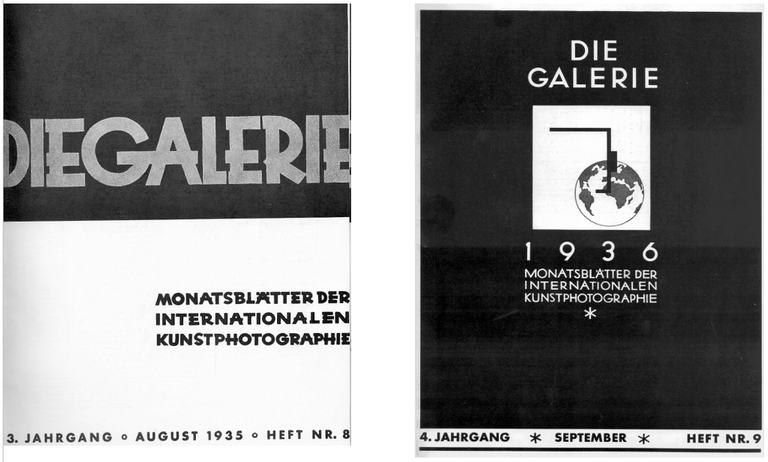
"Die GALERIE. Monatsblätter der internationalen Kunstphotographie" was published in several languages. The editors of "Die Galerie", from among the photographs submitted from various countries, selected the 20 best photographs for each issue of the monthly (along with a description of the conditions under which they were taken and exposed on paper).
A photograph showing Vilnius on a sunny April day at 7 o'clock in the morning, which was published under No. 147 (in continuous numbering) in No. 8 "Die Galerie" (1935), was obtained courtesy of the library of the Institute of Art of the Polish Academy of Sciences in Warsaw, which holds all the annuals.
Reveal spoiler
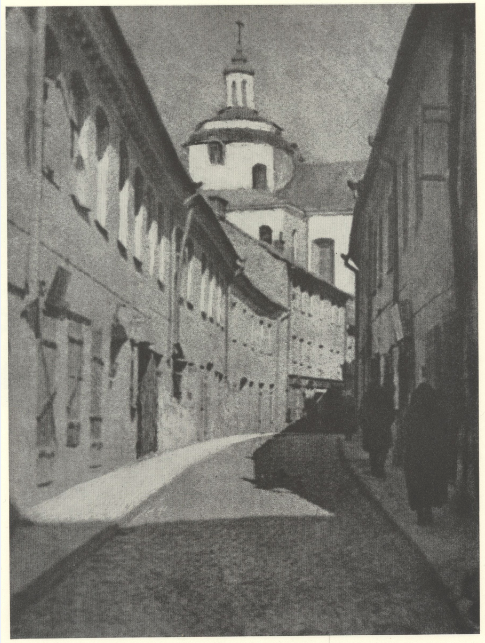
(C)Stefan Fus s.
What catches the eye in the photograph, seen from Szklarska Street, is the block of the Dominican Church, towards which the dark edges of the roofs converge, while the walls of the buildings on the right have been marginalized by shadow.
I also found a German-language copy in a German antique shop, which included photograph No. 176 in No. 9 of "Die Galerie" published in 1936, titled "Geese," showing the movement of a group of geese.
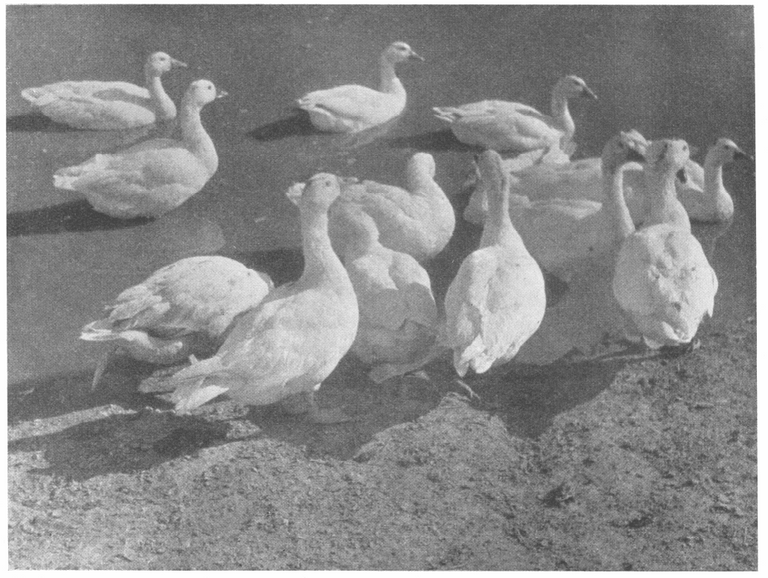
(C)Stefan Fus s.
== I own the property copyright to the above photographs.
Some of the photographs in this issue are stunning in their shots and play of light.
I thought to scan all 20 photographs from this issue of "Die Galerie" and present them.
But ...
After reading @leon112's post on infringement of property copyright in old photographs [https://peakd.com/polish/@leon112/photographs-wierzbinski-publ-hallmann-and-infringement-of-author's-own-rights]
I began to analyze the situation in relation to the time of death of several authors (from different countries) of the photographs in this issue of the monthly magazine „Die Galerie”.
I searched the Internet for the authors' biographies, which in various foreign languages is not a simple matter.
For some of the photographs, the property copyright under Polish copyright law has expired, as 70 years have passed since the death of the authors.
AN INTERESTING PROBLEM has arisen regarding one of the most interesting in No. 9 photographs No. 180, in my opinion, in terms of the shot and the play of light on the water, taken in 1936 by the Hungarian photographer Janos Kunszt (1892-1960)[https://www.arcanum.com/hu/online-kiadvanyok/Lexikonok-magyar-eletrajzi-lexikon-7428D/k-760F2/kunszt-janos-767E5/].
The photograph shows a swimmer probably (according to my understanding) in the pool of the Gellert Baths in Budapest shot perpendicularly from above, from the gallery, amid flashes of light on the waves.
It has been 86 years since the photograph was taken/published, but the author died in 1960, 62 years ago, so it is not 70 years since the author's death.
The author was Hungarian, the photograph was taken in Hungary, published in an Austrian monthly magazine, and under Hungarian and Austrian copyright law, the author's economic copyright in the photograph has expired. However, they have not expired under Polish copyright law.
What will happen if this photograph - scanning it from a monthly magazine that I bought to own - is published on the HIVE blog, whose servers operate in different countries, and I send it via a server, for example, Cyberghost with an address in Germany?
Formally,
I, as a Polish citizen residing in Poland, should abide by the provisions of the Polish Copyright Act in effect in the territory of Poland, and therefore I may have a lawsuit brought against me by the heirs of Janos Kunszt for infringement of property copyrights in effect in Poland.
Is my reasoning correct?
Theoretically, it is possible from an anonymous account, e.g. a German one, to post a photograph on a new Pinterest.com account and point to the link. Maybe I'll get through the verification of hotmail.de or another service someday to share interesting photographs from the old days. What is needed is a service that does not check (for anonymity) the previous email account indicated at registration.
Below I present a photograph of the same No. 174 from the same copy of "Die Galerie" entitled „Hutsuli”.
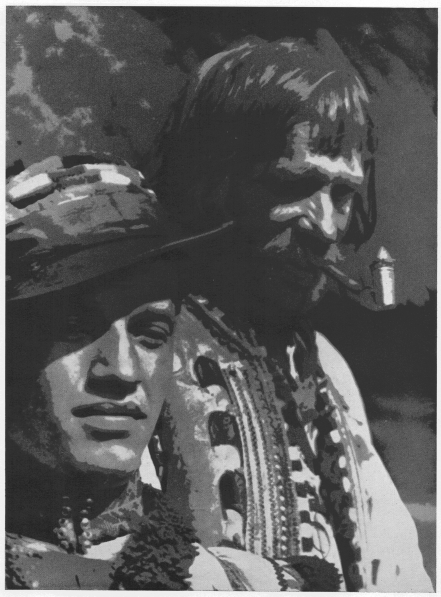
Edward Czerny, who was a promoter of native photography.
He was a mining engineer from an oil mine in Bitkov near Nadwórna in Pokucie. He first presented his works in 1933, during the 7th International Salon in Cracow. A series of photographs showing the beauty of the Hutsul region drew the attention of the photographer from Bitkov (he usually signed his works "Edward Czerny from Bitkov"). In 1937 he became a member of the elite Fotoklub Polski - the first nationwide photographic association, existing from 1929 to 1939, bringing together the elite of photographers, pictorialists from all over Poland.
A selection of Czerny's photographs (including "Spring in Hutsulshchyna" [https://www.facebook.com/photo/?fbid=1700111636716213&set=wiosna-na-huculszczyźnie-jedno-z-moich-najulubieńszych-ujęć-wiosennych-z-kresów-]
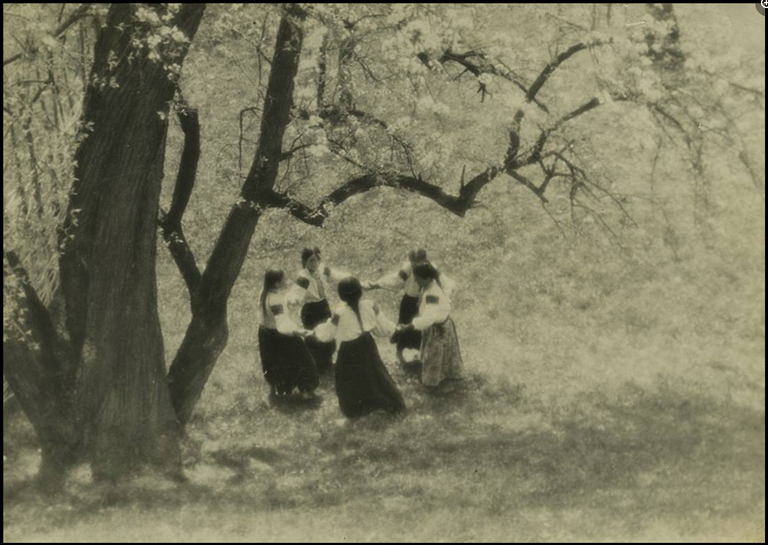
were featured on two series of postcards issued in the second half of the 1930s.
It is known that Edward Czerny died during World War II.
When taking color photographs, authors usually seek subjects with color play and pay less attention to the play of light and shadow.
I hope that some amateur photographers, after reading this text, will take a different look at the creative vision and search for a subject by the author of black-and-white photography.
- PL
W czasach, w których nie było dostępnych kolorowych filmów, ani aparatów cyfrowych, fotoamatorzy wkładali więcej wysiłku w wyszukanie ciekawego tematu, ujęcia i gry świateł w kompozycji przy wykonywaniu biało-czarnych fotografii.
Dzisiaj – często – jest to automatyczna transformacja, przeróbka wykonanej smartfonem fotografii kolorowej na biało-czarną.
SZUKAŁEM i ZNALAZŁEM
Udało mi się znaleźć, w jednym z zagranicznych antykwariatów, jeden z dwóch poszukiwanych przeze mnie egzemplarzy miesięcznika fotograficznego wydawanego w latach 30-stych ubiegłego wieku, przed II wojną światową, w Wiedniu.
„Die GALERIE. Monatsblätter der internationalen Kunstphotographie” był wydawany w kilku wersjach językowych. Redakcja „Die Galerie”, spośród nadsyłanych fotografii z różnych krajów, do każdego numeru miesięcznika wybierała 20 najlepszych fotografii (wraz z opisem warunków wykonania i ekspozycji na papierze).
Fotografię ukazującą Wilno w słoneczny kwietniowy dzień o godz. 7-mej rano, która opublikowana była pod nr 147 (w ciągłej numeracji) w nr 8 „Die Galerie” (1935), uzyskałem dzięki uprzejmości biblioteki Instytutu Sztuki PAN w Warszawie, posiadającej wszystkie roczniki.

(C)Stefan Fus s.
(wykonane lustrzanką 6x6, Franke und Heidecke "Rolleiflex", obiektyw 1:3,8,
f=7 1/2 [Zeiss"Tessar"], w kwietniu o godz. 7 rano przy słońcu,
blenda 3,8, 1/100 sek.)
Na fotografii uwagę przykuwa, widziana od strony ul. Szklarskiej, bryła kościoła Dominikanów, ku której zbiegają się ciemne krawędzie dachów, zaś ściany budynków po prawej stronie zostały zmarginalizowane cieniem.
.
Znalazłem również w niemieckim antykwariacie egzemplarz nr 9 „Die Galerie” (wydany w 1936), niemieckojęzyczny, w którym była zamieszczona fotografia nr 176 zatytułowana „Gęsi”, ukazująca przemieszczanie się grupy gęsi.

(C)Stefan Fus s.
(wykonane małym aparatem 2,4x3,6, Leitz "Leica", obiektyw 1:3,5, f=5 cm [Leiz"Elmar"], w sierpniu o godz. 15 przy słońcu, Blenda 9, 1/100 sek.)
== Do powyższych fotografii posiadam majątkowe prawa autorskie.
Niektóre z fotografii w tym numerze zachwycają ujęciem i grą świateł.
Pomyślałem, aby wszystkie 20 fotografii z tego numeru „Die Galerie” zeskanować i je zaprezentować.
Ale …
Po przeczytaniu postu @leon112 na temat naruszenia majątkowych praw autorskich do starych fotografii [https://peakd.com/polish/@leon112/fotografie-wierzbinskich-publ-hallmann-i-naruszenie-autorskich-praw-majatkowych]
zacząłem analizować sytuację w odniesieniu do czasu śmierci kilkunastu autorów (z różnych krajów) fotografii z tego numeru miesięcznika „Die Galerie”.
Poszukałem w Internecie biogramy autorów, co w różnych obcych językach nie jest sprawą prostą.
Do niektórych fotografii majątkowe prawa autorskie w świetle przepisów polskiego prawa autorskiego wygasły, gdyż minęło 70 lat od śmierci autorów.
Ciekawy PROBLEM pojawił się w odniesieniu do jednej z najciekawszych w nr 9 – moim zdaniem – fotografii nr 180, pod względem ujęcia i gry świateł na wodzie, której autorem w 1936 r. był węgierski fotografik [Janos Kunszt (1892-1960)][https://www.arcanum.com/hu/online-kiadvanyok/Lexikonok-magyar-eletrajzi-lexikon-7428D/k-760F2/kunszt-janos-767E5/].
Fotografia przedstawia pływaka prawdopodobnie (według mojego rozeznania) w basenie Łaźni Gellerta w Budapeszcie ujętego prostopadle z góry, z galerii, wśród rozbłysków światła na falach.
Od wykonania/opublikowania fotografii minęło 86 lat, ale autor zmarł w 1960 r., 62 lata temu, czyli nie minęło 70 lat od śmierci autora.
Autor był Węgrem, fotografia została wykonana na Węgrzech, opublikowana w miesięczniku austriackim i w świetle prawa autorskiego Węgier i Austrii majątkowe prawa autorskie do tej fotografii wygasły. Nie wygasły jednak w świetle przepisów polskiego prawa autorskiego.
Co będzie jeśli tę fotografię - skanując ją z miesięcznika, który kupiłem na własność – opublikuję na blogu HIVE, którego serwery pracują w różnych krajach, a ja ją wyślę przez serwer np. Cyberghost z adresem w Niemczech?
Formalnie,
ja jako obywatel polski, zamieszkały w Polsce, powinienem przestrzegać przepisów polskiej ustawy o prawie autorskim obowiązującej na terytorium Polski, a zatem mogę mieć wytoczony proces o naruszenie majątkowych praw autorskich obowiązujących w Polsce, przez spadkobierców Janosa Kunszt'a.
Czy moje rozumowanie jest poprawne?
Teoretycznie można z anonimowego konta, np. niemieckiego, umieścić fotografię na nowym koncie Pinterest.com i wskazać link. Może przebrnę kiedyś przez weryfikację hotmail.de lub innego serwisu, aby udostępnić ciekawe fotografie z dawnych lat. Potrzebny jest serwis, który nie sprawdza (pod względem anonimowości) wskazanego przy rejestracji wcześniejszego konta mail'owego.
Poniżej prezentuję fotografię nr 174 (z tego samego numeru „Die Galerie” zatytułowaną „Huculi”) Edwarda Czernego, który był propagatorem fotografii ojczystej.

E. Czerny był inżynierem górnikiem z kopalni nafty w Bitkowie k. Nadwórnej na Pokuciu. Swoje prace po raz pierwszy zaprezentował w 1933 roku, podczas VII Salonu Międzynarodowego w Krakowie. Cykl zdjęć ukazujących piękno Huculszczyzny zwrócił uwagę na fotografika z Bitkowa (prace podpisywał najczęściej „Edward Czerny z Bitkowa”). W 1937 został członkiem elitarnego Fotoklubu Polskiego - pierwszego ogólnokrajowego stowarzyszenia fotograficznego, istniejącego w latach 1929 - 1939, zrzeszającego elitę fotografów, fotografików piktorialistów z całej Polski.
Wybrane fotografie Czernego (w tym „Wiosna na Huculszyczyźnie” [https://www.facebook.com/photo/?fbid=1700111636716213&set=wiosna-na-huculszczyźnie-jedno-z-moich-najulubieńszych-ujęć-wiosennych-z-kresów-]

znalazły się na dwóch seriach kart pocztowych wydanych w drugiej połowie lat 30.
Wiadomo, że Edward Czerny zginął w czasie II wojny światowej.
Przy wykonywaniu fotografii kolorowych autorzy poszukują zazwyczaj tematów z grą kolorów i w mniejszym stopniu zwracają uwagę na grę światła i cienia.
Mam nadzieję, że niektórzy fotoamatorzy, po przeczytaniu tego tekstu, inaczej spojrzą na twórczą wizję i poszukiwania tematu przez autora fotografii biało-czarnej.
Congratulations @fus-stefan! You have completed the following achievement on the Hive blockchain and have been rewarded with new badge(s):
Your next target is to reach 50 upvotes.
You can view your badges on your board and compare yourself to others in the Ranking
If you no longer want to receive notifications, reply to this comment with the word
STOPSupport the HiveBuzz project. Vote for our proposal!